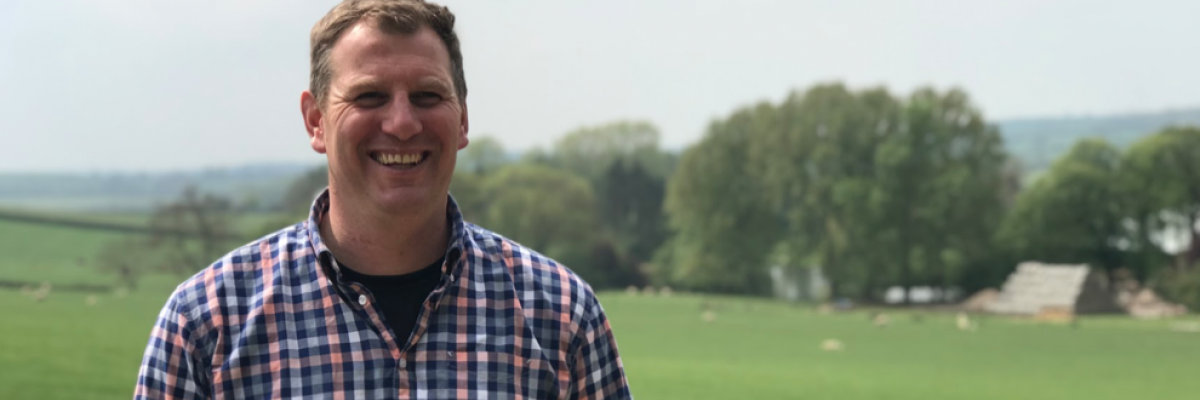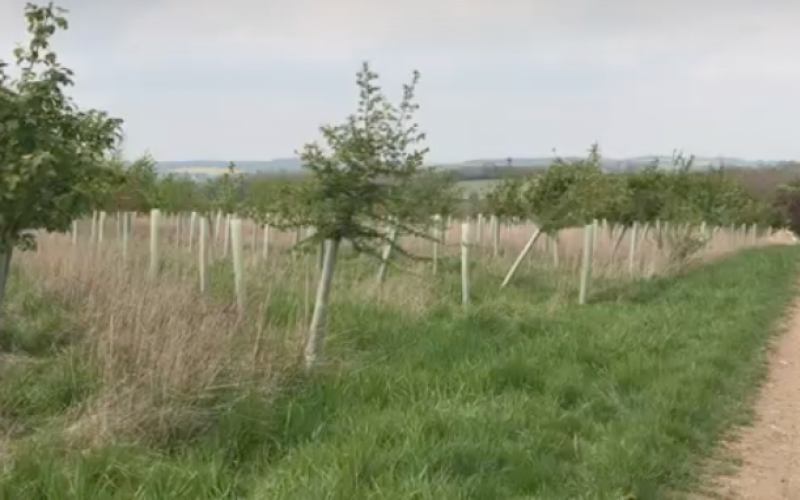
Dan Bussey
Farm ManagerManor Farm, Leicestershire
I currently manage Manor Farm, a 1,000 acre estate on the Leicestershire borders, which focuses on regenerative land management to restore soil health and productivity, increase yield, improve water retention, plant trees and bring carbon back to the land.
I have significant operational experience in improving a whole farm approach on arable, livestock and mixed farms. Prior to joining Philipson Estates in 2017, I spent 8 years managing a Herefordshire Council smallholding on a Farm Business Tenancy. The holding had been arable for a number of years and Herefordshire Council were keen to bring stock back to the land to improve the soil. We had 600 ewes and 50 pedigree Hereford cattle suckler herd. In addition to this we operated a Kelly Bronze turkey franchise and I worked off the holding for an arable contractor each summer. In 2017, Hereford Council sold our smallholding to a soft fruit producer and the Murray Philipson family purchased my established herd of Hereford cattle, a newly sourced flock of Innovis Highlander sheep and employed me to manage Manor Farm Blaston.
Our predominant soil type is heavy clay which suits combinable crops and we grow oilseed rape (OSR), wheat, spring barley, spring oats and feed beans. We use cover crops as a blackgrass control method and introduce temporary grass leys for 3-4 years to graze, bale or forage. Our wheat is sold into a pool to sell via Gleadells, a percentage of which is forward sold to cover our overheads. Rape is sold to United Oils. We aim to chop straw to complement the rotation to put organic matter back into the soil. We will also ensure we produce enough straw for stock bedding/feed. Beef will be sold through the Co-Op Hereford scheme which attracts a premium price.
The plan for lamb is to pasture feed and sell on the hook. Last year we were forced to change the planned model for lamb sales. We sold as stores as the drought meant major grass shortages and previously let grassland had been overstocked.
Discreet solar panels have been added to farm buildings - we produce more electricity than we utilise and sell back to the grid.
To help improve biodiversity, we are carrying out bat surveys, farmland bird counts and owl calling surveys.
Restoring soil health through livestock integration, crop rotation, tree planting, direct drilling and traffic control measures
We are working towards a regenerative agriculture model, restoring soil that was becoming less and less fertile and having symptoms of poor health such as blackgrass, low worm counts, poor soil structure, low soil organic matter, soil erosion and poor drainage. None of what we do is complex or unheard of - what is working for us is the combination of our improvements and a focus on the whole farm. We have a long way to go and are continually learning how to make improvements. Essentially our journey so far has been centred around:
Livestock integration
Following a number of years renting out the grassland we bought the livestock enterprise back in-hand in 2017. This now features planned grazing of pasture fed pedigree Hereford cattle and 500 Innovis Highlander ewes in an outdoor lambing system. We have designed new replacement livestock and storage buildings. Half of the buildings have been erected and we are awaiting planning for the second half. Integration of livestock has been a real challenge. What worked in theory on paper went wrong for many reasons:
- Fencing - cattle and sheep cannot be held securely using electrified fences. Whilst they continue to be an integral part of the system and we will always need electric fences, especially for mob grazing, a planned approach to stock proof fencing is required.
- Adverse weather - spring 2017 saw snow and the ‘Beast from the East’ storm. Our first year of outdoor lambing was traumatic - lambs perished in the cold. Sheep could not use hedges and trees for shelter as electric fences prevented them from doing so. Our outdoor system failed. We bought in the weakest, nurtured them, and put them out in plastic jackets, but losses were extreme.
- Labour - there is limited skilled livestock casual labour locally.
- Sick sheep - permanent pasture had been used for sheep for many years and the land needed a break from sheep. Cattle have been introduced to complement the grazing routine.
- Water - water supply to arable fields that have never been previously stocked needs planning.
- Lame cattle - old permanent pasture fields with hidden old tree stakes, fencing posts and rusty old nails have resulted in lame cattle.
This highlighted that we need to integrate the sheep into the system at a slower pace to ensure land has adequate rest from previous over-grazing routines (especially important if this hasn’t been in your control), and it is important to ensure cattle housing and handling is available before bringing cattle onto the land. The real value in the livestock lies in the spreading of manures to improve the soils.
Arable crop planting rotation
We have enhanced the arable enterprise with the design of a 5 year crop plan, implemented direct drilling, planted diverse cover crops, and ensured rotational cropping. We found that OSR was the best crop to grow after grass and that it works well to direct drill it with berseem clover. Berseem has a great root structure and the rape follows this root structure. As the clover dies, it feeds the rape through the winter and provides nitrogen fixation. After OSR, we direct drill wheat, introduce a cover crop after wheat (usually black oats or clover), then a spring crop, and then put the field back into grass. If a field is in really poor health I’d suggest grassing it down.
Our biggest challenge is that more conventional ways of doing this would result in higher profits in the short term - you have to have a long-term vision to justify changes financially.
Tree planting
Over the last few years we have planted over 30,000 trees, equating to 14 hectares (ha), which are a mixture of mixed native and non-native species to link up the isolated woodland blocks across the estate. In addition to this we have undertaken a further 1ha of woodland restocking. This planting has significantly increased habitat connectivity across the estate, when established it will increase shelter for stock and crops, and help improve water quality by delaying/reducing run-off from storm events.
Soil monitoring, direct drilling and traffic control
Our main focus area has been soil health rejuvenation and improvement, soil health monitoring, and management. This includes limiting soil disturbance, introducing traffic control measures (widened tram lines from 24m to 30m) and introducing direct drilling across the farm, working to significantly improve soil organic matter.
I really like the fact that carbon can be sequestered into the soil and water holding capacity and nutritional value can be improved. I also believe that sustainable agri-businesses should be self-sufficient and operated as a commercial entity to enable long-term stability. We can significantly reduce our requirement for pesticides, herbicides, fungicides and fertilisers through good farming practices. We never use blanket or routine treatments for crops or stock.
I am driven by improvement, enjoy a challenge and have really high levels of attention to detail. I like to see broken things fixed - soil is our most important asset and as such deserves the majority of our time. In addition to asset improvements, I am motivated by having good stock with high standards of animal welfare, strong crop performance and selling farm produce for sustainable prices.
Longer term, I’ll still continue to be striving for improvement - there’s always plenty to improve and the opportunity for better resilience within the agri-system to respond to risks such as disease, pests, weather variances and market volatility.
I’d like to see more collaboration and partnerships between farms and a sustainable model that can work for everyone, including smaller farms. This needs real development - we need to think differently about how sustainable models work financially and not just agriculturally. For example, could non agri-businesses with high carbon footprints sponsor those agri-businesses who can provide carbon solutions? I think government policy must reflect sustainable practices, i.e. cover cropping, direct drilling, spring cropping, soil health etc. to ensure the uptake is high across the UK for maximum soil benefit.
I’d also like to educate and train others to implement this model for greater impact whilst contributing to safeguarding our soils for future generations. I’d like to forge closer links with retailers and consumers. I’d like them to recognise the difference between sustainable and regenerative produce and that which is intensively farmed.
|
FARMER TIPS
|






